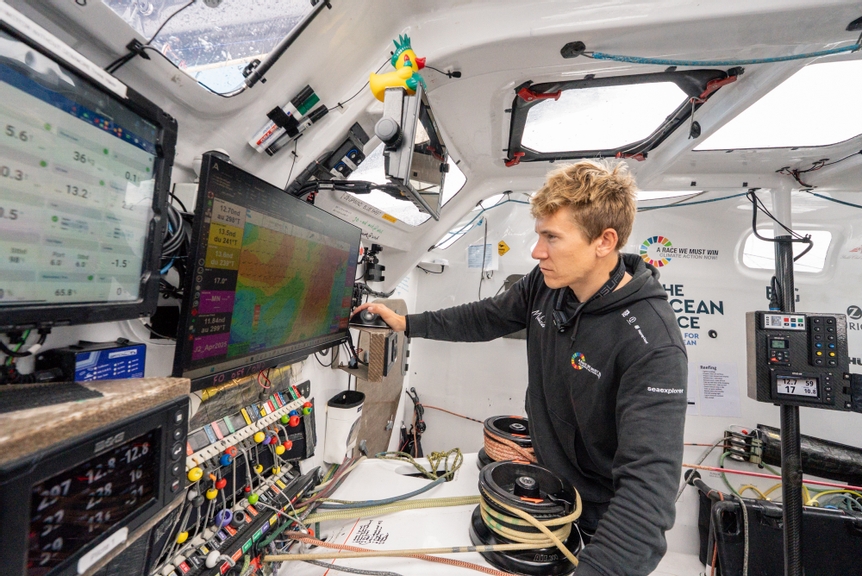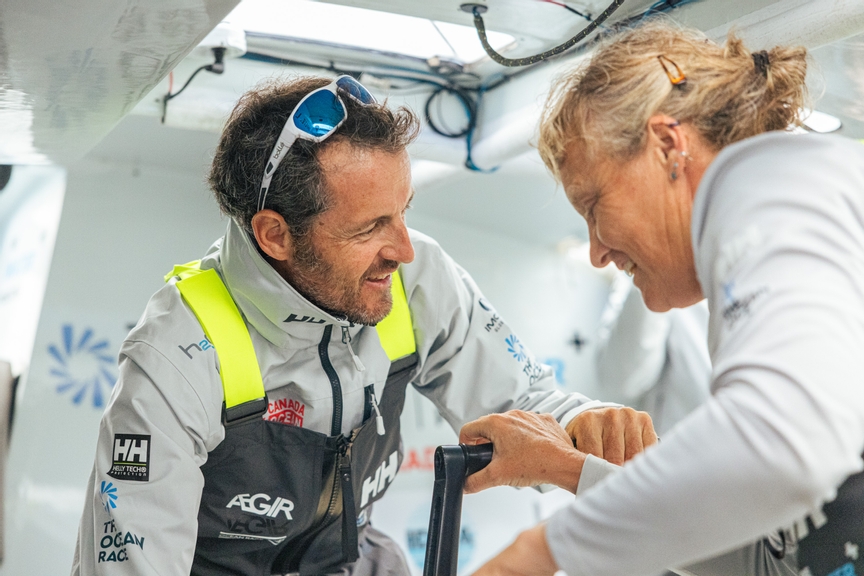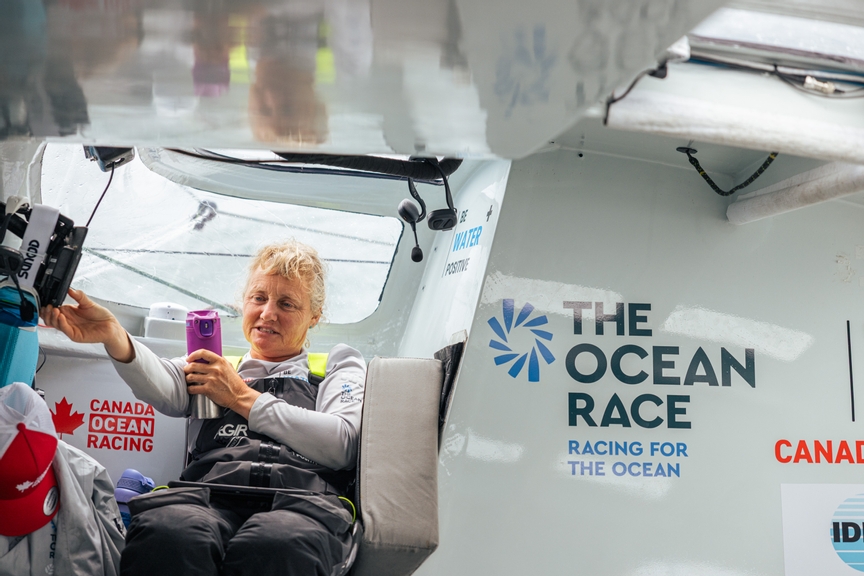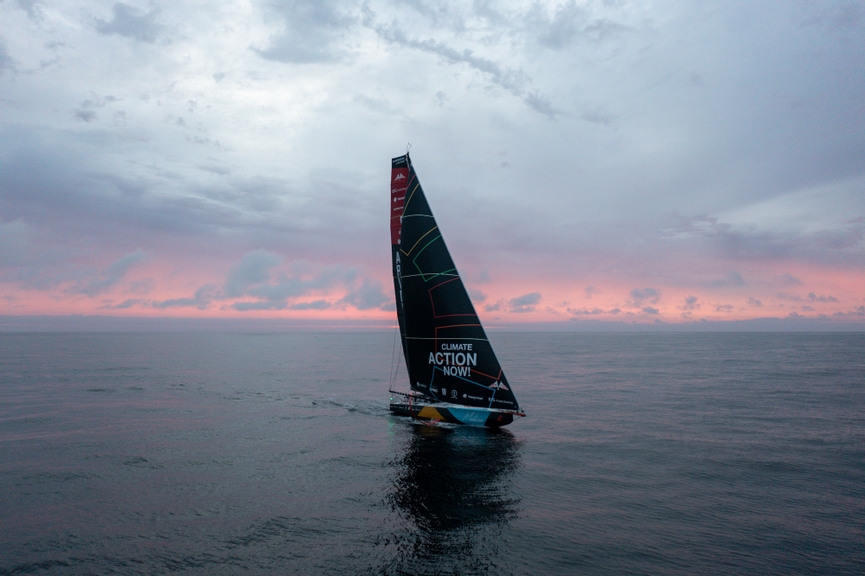Light winds slow the fleet – but the battle remains tight
The pressure is high, as the racing remains close
Two days after the spectacular start from Kiel, the high-speed foiling conditions in the Baltic Sea have given way to light winds, with a high-pressure ridge slowing progress south. At 08:00 this morning, Biotherm continued to lead with an 8-mile advantage over Paprec Arkéa and 14 miles over Team Malizia.
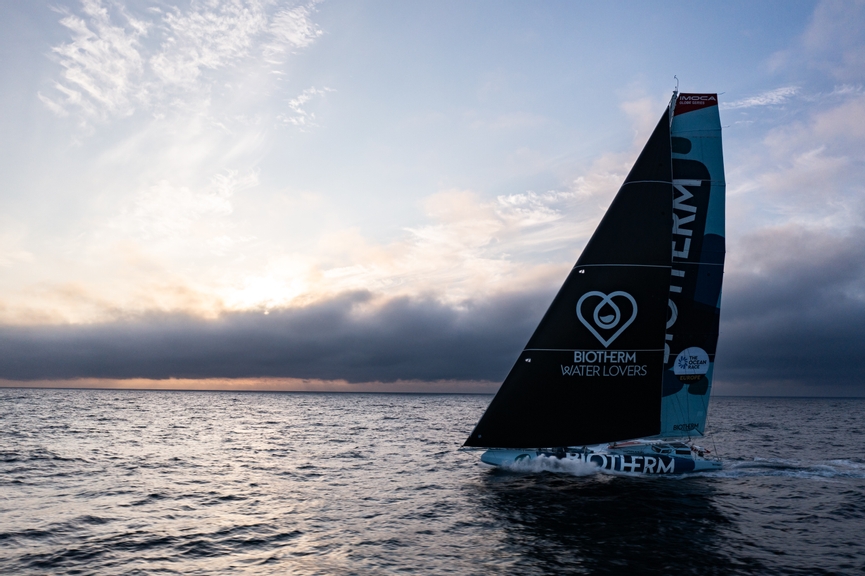
“The high-pressure system has expanded, creating a ridge,” explained Christian Dumard, the meteorological consultant for The Ocean Race Europe. “As the boats move south, the westerly wind is weakening.”
Jack Bouttell (Biotherm) described the past 24 hours: “After passing Denmark, we had a lot of tacks and it was really tiring. Last night the wind dropped, but we got through a little quicker than the routing predicted.”
Behind the leaders, Canada Ocean Racing – Be Water Positive is 41 miles back, with Team Amaala 64 miles behind. “Since Monday morning these have not been our ideal conditions as we’ve been close to the wind, beating and it’s hard,” said Team Amaala skipper Alan Roura. “We’ll have to get out of this transition zone, even if it’s never easy, especially with the short chop we have here.”
Christopher Pratt (Canada Ocean Racing – Be Water Positive) added: “After the tacks along Denmark, this section isn’t brutal but it’s enough to shake everyone. The upside of low speeds and calm seas is that you can take good naps after a hard-fought battle in the light airs!”
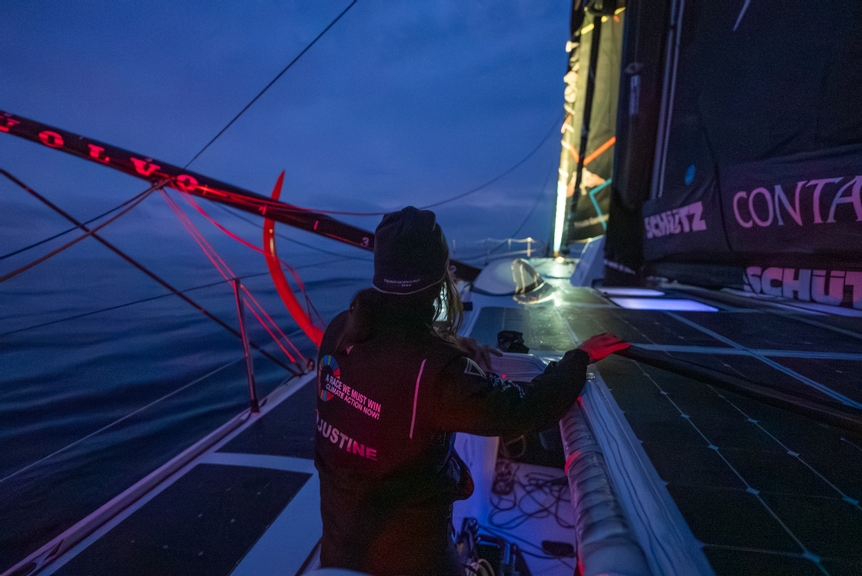
Despite the slow going, morale remains high.
“We’re learning how to trim and handle the boat together, but we’re really happy with our first part of the race,” said Pratt.
“The atmosphere on board is great,” added Roura. “We’re sailing seriously while keeping a friendly and joyful spirit and enjoying doing what we love, together.”
Bouttell agreed: “Everyone gets along well, we joke and laugh. It’s really nice. We even had a beautiful sunset with dolphins yesterday.”
Looking ahead, the wind is expected to strengthen and shift to the southeast, potentially sending the fleet on a reaching leg towards the English coast.
“Depending on the models, we’ll have to choose sails carefully – some angles are more reaching, others more downwind VMG,” said Bouttell. “In about 100 miles we’ll reach the first Traffic Separation Schemes, where course options will be more limited. There’s still a lot of miles to go – and plenty can happen before the finish.”
